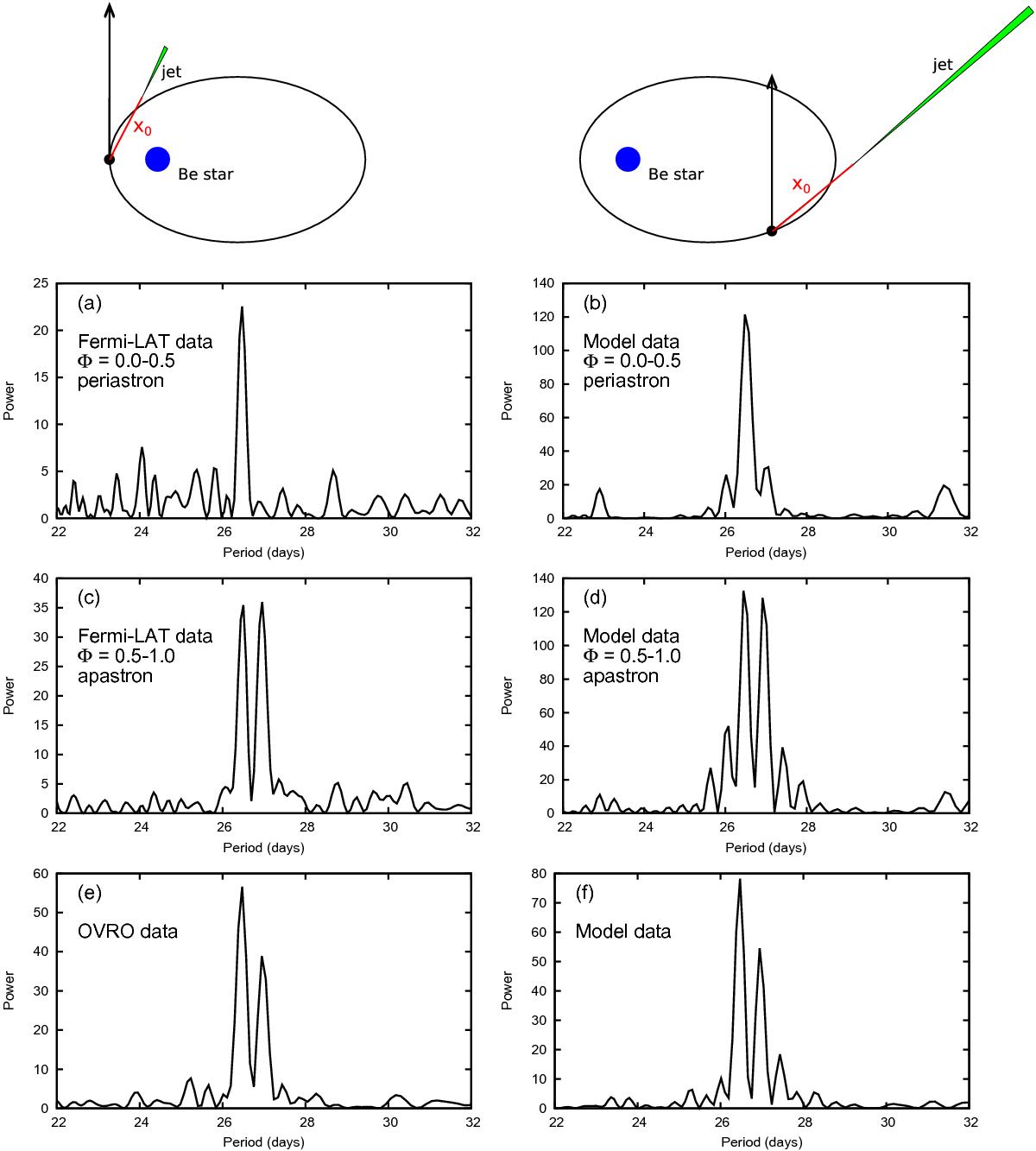Fig. 1

Top: sketch of the stellar system LS I + 61°303. We assume two ejections of relativistic electrons along the orbit as in Bosch-Ramon et al. (2006). The two ejections refill the conical precessing jet defined in Massi & Torricelli-Ciamponi (2014). The electrons emit by synchrotron and IC processes. The resulting jet parameters are given in Table 2. The ejection at periastron gives rise to gamma-ray emission only and the periodogram of this emission only shows P1, the orbital period. The ejection towards apastron is associated with gamma-ray and radio emission. The periodograms for both emissions show two features, at P1 and P2, the precession period of the jet. a) Lomb-Scargle periodogram for Fermi-LAT data from the orbital phase interval Φ = 0.0−0.5 (periastron). The orbital period P1 is clearly detected. b) Lomb-Scargle periodogram of the model gamma-ray data (IC) from the orbital phase interval Φ = 0.0−0.5 (periastron). The orbital period P1 is the only peak, in agreement with the observations. c) In the orbital phase interval Φ = 0.5−1.0 (apastron), there is a peak at the precession period P2 in addition to the orbital period P1. d) The two peaks at P1 and P2 in the apastron data are reproduced by the model. e) Lomb-Scargle periodogram for OVRO radio data for the whole orbital phase interval. Both P1 and P2 are present. f) Lomb-Scargle periodogram of the model radio data (synchrotron emission). Both peaks are reproduced by the model.
Current usage metrics show cumulative count of Article Views (full-text article views including HTML views, PDF and ePub downloads, according to the available data) and Abstracts Views on Vision4Press platform.
Data correspond to usage on the plateform after 2015. The current usage metrics is available 48-96 hours after online publication and is updated daily on week days.
Initial download of the metrics may take a while.


